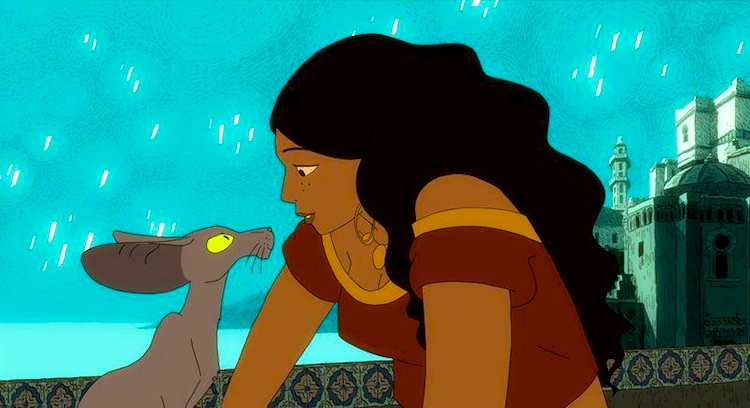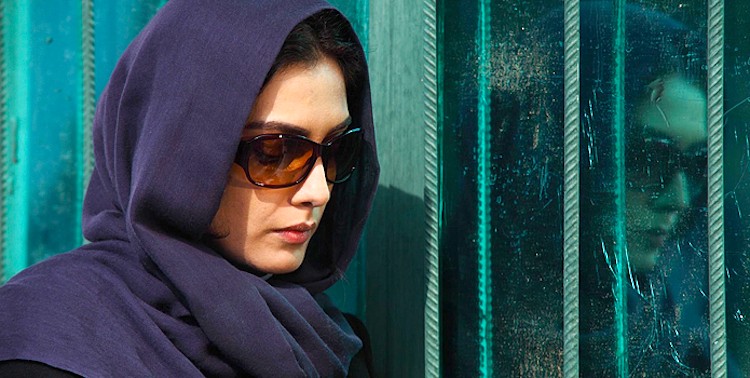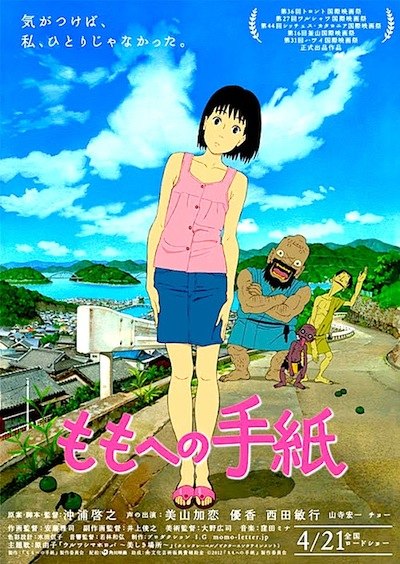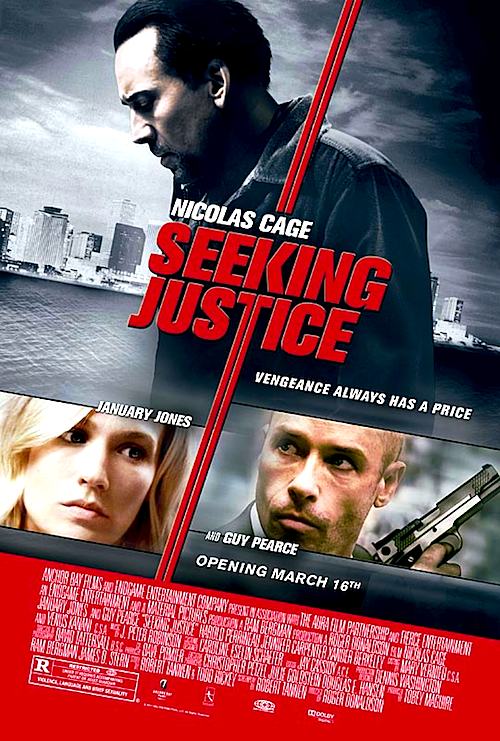By Joe Bendel. It is a time in Algiers when Jews and Muslims lived together harmoniously. It is also an animated fantasy with a talking cat. Nonetheless, there is a distinctive mix of gentle nostalgia and broad comedy in Joann Sfar & Antoine Delesvaux’s The Rabbi’s Cat, which screens as part of the 2012 New Directors/New Films.
The time is the early 1920’s, after the Russian Revolution, but before World War II. We know this because Rabbi Sfar regularly gets shipments of Russian Rabbinical texts sent to him for safekeeping from the Bolsheviks. He has a cat with no name, known only as “le chat du rabbin.” While his identity comes from the Rabbi, it is the Rabbi’s voluptuous daughter Zlabya whom the cat loves best. However, the Rabbi temporarily forbids the cat to see his mistress when the cat mysteriously begins talking one day.
Actually, the talking thing comes and goes, to the Rabbi’s befuddlement. He will have even more to puzzle out when through a turn of magical realism, a Russian refugee is found alive and well in his latest cargo from the Soviet Union. Of course, nobody can understand his Russian, except the cat, who inconveniently is currently amid one of his speechless stretches.

There are enough Jewish identity jokes in Cat to fill Billy Crystal’s next Catskills set. Yet, there is also something seductively exotic about this cat’s eye view of Algiers. Sfar and Delesvaux earnestly want to present a picture of interfaith tranquility, perfectly represented by the Rabbi and his Sufi cousin, Sheik Mohammad Sfar, two branches of the same but diverse family. They even skewer the unrehabilitated and pre-Spielbergized Tintin in one rather random scene. Yet, they do not completely burry their heads in the Kumbaya sand, depicting the touchy intolerance of an Islamist Bedouin clan, whose hospitality quickly becomes somewhat precarious for the inclusively motley Sfar expedition.
Considering Cat adapts non-sequential volumes of Sfar’s popular graphic novel series, it is hardly surprising the narrative jumps around quite a bit. In an odd way, though, that hop-scotching gives the film its energy. Those looking for something to offend them will probably find it here, but Cat is mostly just harmless fun. Though a bit spicy at times, it is probably okay for older kids, but parents should probably decide on a case by case basis.
Evocatively rendered, Cat’s animation captures the spirit of the original comic art, while conveying the allure of the Middle Eastern locales. It also represents a bit of festival history, holding the distinction of being ND/NF’s first 3D selection and their first screening deliberately intended for family viewing. Recommended for animation fans, particularly admirers of Sfar’s work, and kids who can handle subtitles and more advanced thematic material (but still enjoy talking animals), The Rabbi’s Cat screens this Sunday (3/25) at MoMA and the following Tuesday (3/27) as ND/NF continues at both venues.
LFM GRADE: B
Posted on March 21st, 2012 at 11:28am.


